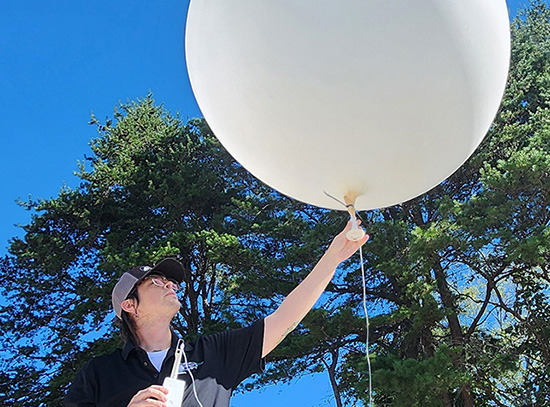Investigating Earth’s atmosphere and environment through laboratory, field, modeling and theoretical studies
The Environmental Science and Technologies Department advances societal well-being, national security, economic resilience, and technological innovation by developing insight into critical atmospheric processes and phenomena. This is achieved through atmospheric and environmental observing activities, laboratory research and data analysis, and the application and advancement of numerical prediction tools. Our work facilitates learning in cloud, aerosol, and precipitation science, atmospheric dynamics, numerical techniques and modeling capabilities, data management, and meteorological services — strengthening infrastructure, supporting decision-making, and driving advancements in atmospheric prediction and analysis.
Aerosols, Clouds, and Atmospheric Dynamics
Critical drivers of extreme weather, water availability, and other phenomena of societal relevance
We conduct research on some of the most significant drivers of impactful phenomena: aerosols and the clouds and precipitation that form around them. Our researchers develop innovative technologies and analysis methods to measure and model aerosol and cloud properties and processes and their evolution in the atmosphere. These efforts enhance prediction accuracy, support critical infrastructure resilience, improve national security, and inform strategic planning and technological advancement in sectors ranging from defense to energy. Additionally, our work improves insights into daily atmospheric conditions, optimizing energy reliability and resource management.
Capabilities
- Next-generation instrumentation & measurement science
- Developing and leading large-scale field campaigns
- Advancing state-of-the-art laboratory facilities
- Harnessing AI & machine learning to unlock maximum data potential
- Designing advanced experimental protocols for atmospheric motion tracking
- Enhancing data-model fusion for breakthrough predictive accuracy
Aerosol Processes & Measurement
This group investigates aerosol properties through laboratory studies, modeling and theoretical analyses, and field measurements; leads in the development of new tools for aerosol measurement and novel approaches to aerosol simulation; and provides measurement capabilities to the DOE Atmospheric Radiation Measurement (ARM) program.
Cloud Processes & Measurement
This group investigates clouds and the processes that affect them and that they affect, and how to represent these processes in models over the range of relevant scales. It also applies expertise to address energy needs such as solar energy forecasts and quantification of storm impacts on utility outages for improvement of grid resiliency and restoration.
Aerosol Measurement Science
The Center for Aerosol Measurement Science (CAMS) provides regular field instrument calibrations to ARM Aerosol Observing System (AOS) instruments using standardized equipment and traceable methods to ensure uniformity and transparency of instrument calibrations and operations.
Multiscale Applied Sensing
The Center for Multiscale Applied Sensing (CMAS) is a multi-disciplinary center providing innovative sensing solutions and applied applications for observing and predicting weather and environment around energy hot spots.
BNF Observatory
We play an active role in the Bankhead National Forest (BNF) atmospheric observatory, a long-term mobile observatory in northwestern Alabama established by the ARM user facility to investigate cloud-aerosol-surface interactions.
Meteorological Services
This group is responsible for the maintenance, calibration, data collection, and data archiving for the weather instrumentation network associated with atmospheric dispersion concerns for Brookhaven Lab.
The Environmental Science and Technologies Department is part of Brookhaven Lab's Environment, Biology, Nuclear Science & Nonproliferation Directorate.
Funding Agencies
Primary funding comes from the U.S. Department of Energy through the Atmospheric Radiation Measurement (ARM) Research Facility and the Atmospheric System Research (ASR) Program.









